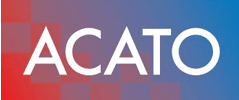ISO 9001 Template Requirements in 2024
ISO 9001 certification requires a collection of documents. There are a number of templates available for purchase online. We use our own ISO 9001 templates so that we can create an individual quality management concept faster and cheaper. The ISO/IEC 9001 standard has an extensive catalogue of mandatory and optional documents that must be presented during the audit. The ISO 9001 standard is modernized every few years. Documents are eliminated, others are expanded or supplemented with additional documents.
Watch our short video on the topic of the ISO 9001 template here:
What must an ISO9001 template contain in 2024?
As you could already see from the video, an ISO9001 template requires a number of documents. With the transition from the ISO9001:2008 standard to the ISO9001:2015, a few significant changes have occurred:
| What has to be documented? | ISO 9001 Sections | Contained in following documents |
| Scope of QMS | Section 4.3 | QMS Project Document |
| Quality Policies | Section 5.2 | Quality guidelines and Objectives |
| Quality Objectives | Section 6.2 | List of Quality Ogbjectives |
| Criteria for evaluating and selecting suppliers | Section 8.4.1 |

The list must be continually updated and adapted to the respective industry. Therefore, we regularly update our industry-specific quality management system templates to the ISO9001 standard.
Consequently, it does not make sense to have to go through another expensive round of certification because of outdated or incomplete templates because the auditor has rejected all documents. We want to provide our customers with a high-quality set of rules in a time-saving manner at affordable costs by continuously improving the templates and checklists.
How do you customize the ISO9001 QMS?
In addition to the general documents, the ISO9001:2015 standard requires that certain company-specific documents also provide evidence of the active implementation of the QMS requirements in everyday operations. A thick folder full of documents is not enough to prove that quality management is actually being carried out.
A. Mandatory documents
The following documents are required by ISO 9001:2015 as mandatory records:
- The following documents are often requested or expected as active evidence:
- Monitoring and measuring equipment calibration records* (Section 7.1.5.1)
- Records of training, skills, experience and qualifications (Section 7.2)
- Product/Service Requirements Verification Records (Section 8.2.3.2)
- Records of design and development results reviews * (Section 8.3.2)
- Records of design and development inputs * (Section 8.3.3)
- Design and development controls records* (Section 8.3.4)
- Records of design and development results * (Section 8.3.5)
- Design and development change records* (Section 8.3.6)
- Properties of products to be produced and services to be provided (Section 8.5.1)
- Customer Property Records (Section 8.5.3)
- Production/Service Delivery Change Control Records (Section 8.5.6)
- Records of compliance of products/services with acceptance criteria (Section 8.6)
- Records of non-conforming results (Section 8.7.2)
- Monitoring and measurement results (Section 9.1.1)
- Internal audit program (Section 9.2)
- Results of internal audits (Section 9.2)
- Results of management reviews (Section 9.3)
- Results of corrective actions (Section 10.1)
Note: Records marked * are only mandatory if the relevant section has not been excluded.
B. Non-mandatory documents
There are a variety of non-mandatory documents that can be used for ISO 9001 implementation. The non-mandatory documents mentioned below are the most commonly used:
- Procedure for establishing the context of the organization and interested parties (Sections 4.1 and 4.2)
- Procedures for addressing risks and opportunities (Section 6.1)
- Competence, training and awareness procedures (Sections 7.1.2, 7.2 and 7.3)
- Procedures for maintenance of equipment and measuring devices (Section 7.1.5)
- Document and Record Control Procedures (Section 7.5)
- Procedure for Sales (Section 8.2)
- Design and development procedures (Section 8.3)
- Production and Service Delivery Procedures (Section 8.5)
- Storage procedures (Section 8.5.4)
- Non-conformity management and corrective action procedures (Sections 8.7 and 10.2)
- Procedures for monitoring customer satisfaction (Section 9.1.2)
- Internal audit procedures (Section 9.2)
- Management review procedures (Section 9.3)
The documents given here as examples do not always apply to every company. A car repair shop has to expect different requirements than, for example, an educational institution or data center.
Do free ISO 9001 templates help?
You are probably asking whether you can create a QMS using “ISO 9001 free sample templates”. These sample templates represent only a small fraction of all relevant documents. They will certainly help to get a better idea of what the ISO IEC 9001 standard expects from certified companies.
Without a truly functioning quality management system (QMS), a certification will not comply with the guidelines of the accreditation bodies. What most business owners and managers overlook is that 80% represents a standardized set of rules. However, the remaining 20% require explicit specialist knowledge. Based on the lack of specialist knowledge in the regulations, an auditor can recognize that the organization being certified has not met the necessary requirements.
DIN ISO IEC 9001 does not expect small companies (SMEs) to employ organizational experts. Many companies have specific issues taken care of by a trusted tax consulting firm or a personnel service provider. They usually handle simple topics themselves with an experienced employee. To ensure that the documentation for the company audit costs as little as possible, we also work together with trusted tax firms.
Due to our expertise in SMEs, holding companies and corporate landscapes, we can also help service providers meet regulatory requirements for more complex issues. This also creates new potential for new business for the service provider. Operational processes are increasingly changing due to the digital transformation in retail and authorities. In this way, we relieve the companies being certified of a lot of the workload that would otherwise have to be done by reformulating free sample templates, which usually do not fully correspond to the current standard. We do not expect our business customers to undergo ISO9001 basic training for 6 months in order to adapt the QMS documentation.
Our experts will take care of the adjustment for you at a significantly lower cost. This means you can even acquire an ISO 9001 certificate within 4 weeks. A free template will only waste your time and budget.
